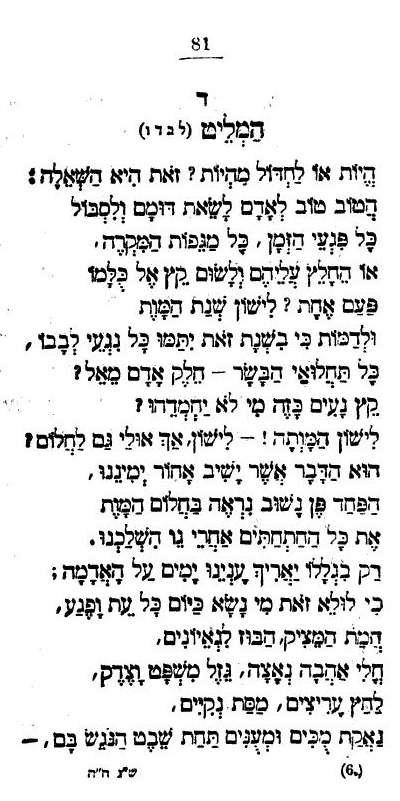The book is basically little musings about Truth, plus an essay about the 1826 shipwreck of the H.M.S. Frances Mary. As near as I can tell, this was written - much less included - because the author wanted to practice his Hebrew or translation skills.
Here's the title page of חקירת האמת:
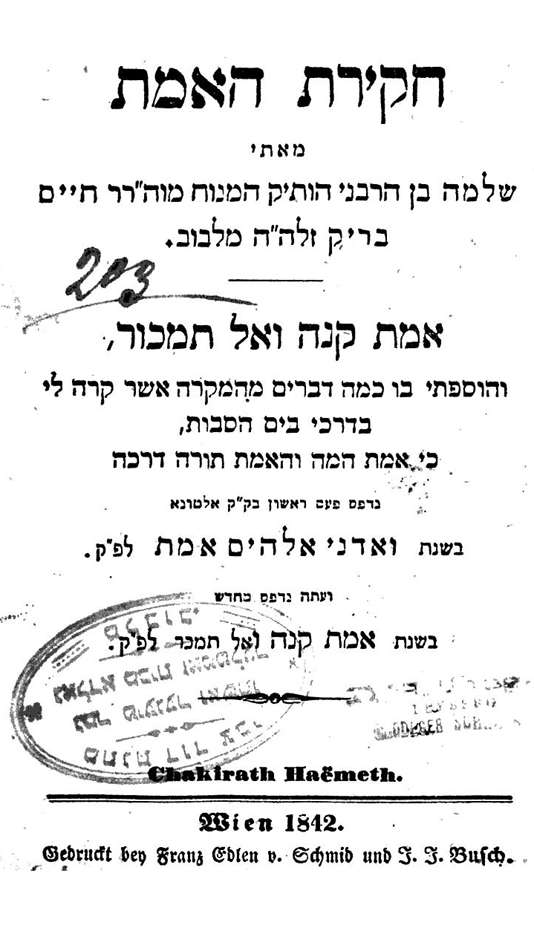
The book includes an interesting and imaginative, but fanciful, guess that the reason why the English word for שקר is Falsehood is because it is a composite of the two words false and hood. This is a metaphor for what Falsehood is and does; it is not true and it "hoods" (covers) the truth. Of course "hood" is an English suffix as well as a word, and in its suffix form it means "state or condition of being," from O.E. -had "condition, position," cognate with Ger. -heit," etc.

It also contains what may well be the first Hebrew translation of Shakespeare's famous lines spoken by Hamlet, To be or not to be - that is the question! -

The biblically allusive אהיה את אשר אהיה, או אהיה אפס ואין: זאת אשאלה?י is not, in my opinion, the best possible translation. Strangely enough in the first edition the quote is להיות או לא להיות, הויה ואפס היא השאלה. Evidently he felt that אהיה את אשר אהיה improved it, which is an opinion not shared by me. I was able to find an excerpt from the first edition:
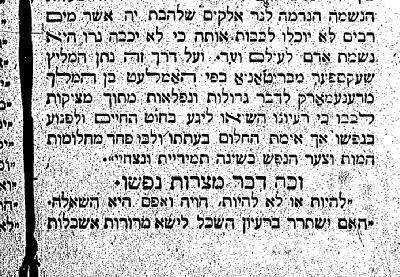
The book includes his subscription list. I'm sure most people reading this know what that means, but it's time to review. In those days a very popular method of raising funds necessary for printing a book was to get people to subscribe to it in advance. They'd give some money, and this would entitle them to a copy when the book was printed, and the names of these people were listed in the books, generally grouped by city of residence.
So here we see that one of the subscribers to this book is Rabbi Avraham Shmuel Sofer, the Kesav Sofer, son of the Chasam Sofer, of Pressburg. So if anyone ever tells you that there's no chance that the Kesav Sofer ever owned, much less ordered, a book which includes Hebrew translations of Shakespeare and essentially secular philosophical musings about the nature of emes and sheker, here is the evidence to the contrary:
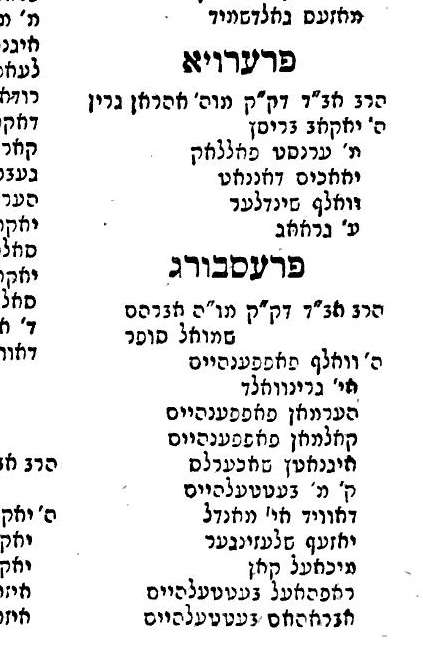
It would be wrong not to include other translations of Hamlet's soliloquy, so here is another one from 1856 - perhaps the second such translation. This one is by someone named Naphtali Poper Krassensohn included in volume 22 of Mendel Stern's Kochebe Yitzchak with the title מרי שיח. It must be translated from German, whereas Brueck - who spent time in England - translated from English:
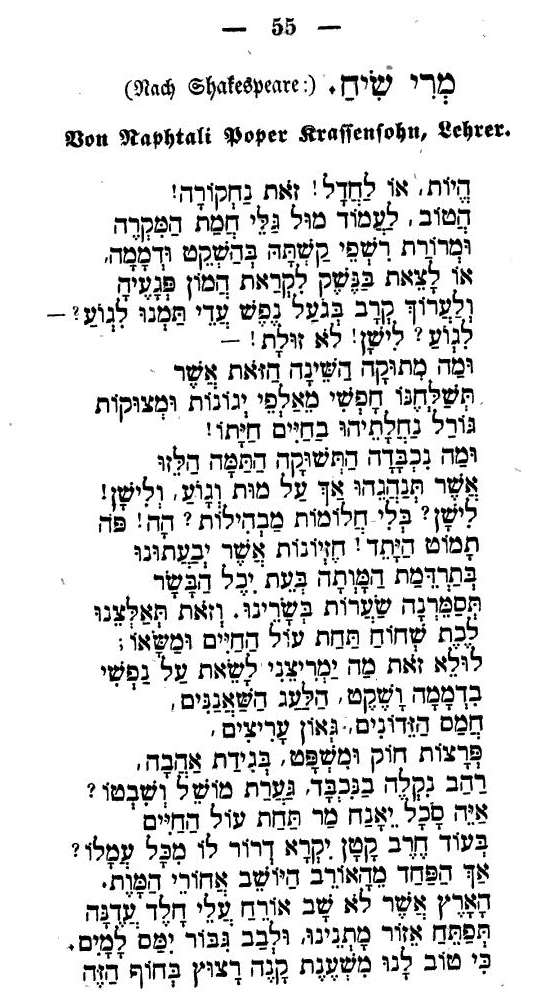

His translation of the famous To be line is היות, או לחדל! זאת נחקורה!י.
Finally, there is Yehuda Leib Gordon's translation, היות, או לחדול מהיות? זאת היא השאלה!י:
